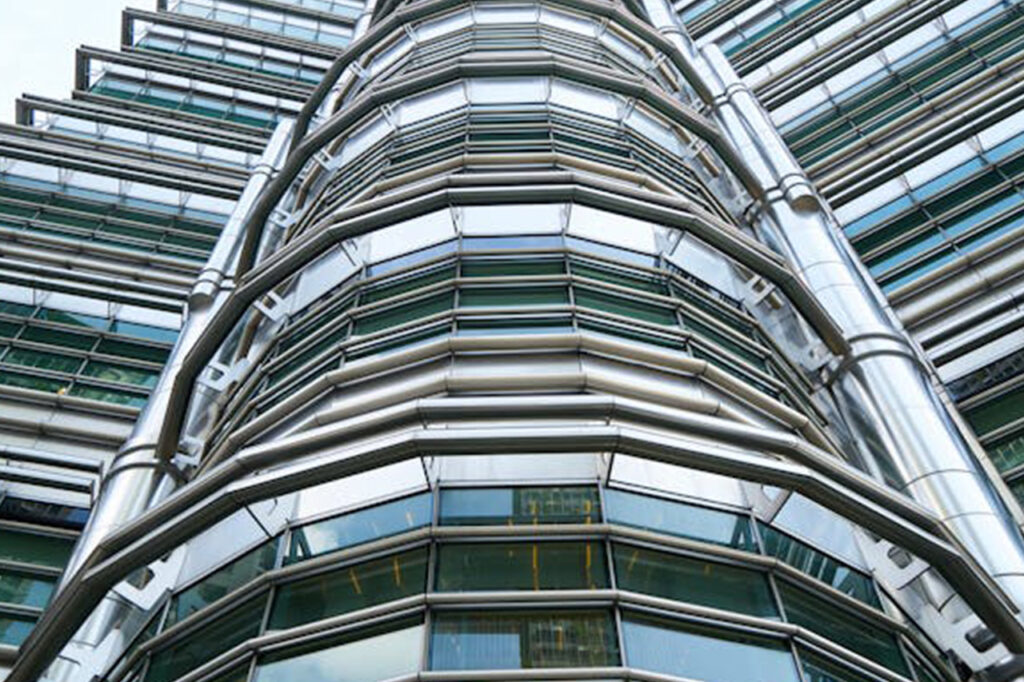Metal buildings have long been associated with industrial warehouses, storage sheds, and agricultural barns. For decades, these structures were designed primarily for utility and cost-efficiency. You see them as warehouses, stock areas, and factories.
As a result, many people have developed the notion that metal buildings lack visual appeal.
However, in recent years, this perception has begun to shift. Thanks to advancements in construction technology and architectural design, metal buildings are now making a statement not just for strength and function but also for beauty and elegance. This article explores the changing face of metal buildings and reveals why it is a myth to think they cannot be aesthetically pleasing.
The Origins of the Stereotype
For years, the common image of a metal building was one of plain corrugated panels, rectangular shapes, and little concern for design. Metal buildings were frequently erected in areas where visual appeal was not a priority. Rural properties, industrial parks, and municipal storage facilities needed structures that were quick to build and capable of withstanding the elements. These early buildings often lacked the decorative details or architectural flourishes seen in traditional homes or commercial buildings made of brick, wood, or stone.
This utilitarian approach led to a lasting stereotype. People viewed metal structures as bare, boxy, and uninspired. For homeowners or businesses seeking curb appeal, metal buildings were often overlooked. Instead, they opted for wood-framed constructions or masonry that could be customized with color, trim, and other decorative elements. As a result, the idea that metal buildings cannot be beautiful has lingered far longer than it should have.
Fortunately, the design and construction of metal buildings have evolved dramatically over the past two decades. Today’s metal buildings can feature stunning designs, architectural elegance, and visual flexibility that rival any traditional structure.
Modern Design Possibilities
One of the most remarkable transformations in the realm of metal construction is the design flexibility now available. No longer constrained to the stereotypical warehouse shape, metal buildings can now incorporate varying rooflines, custom layouts, and intricate facades. Architects and engineers have collaborated to bring a new level of creativity to the design process, offering clients options that were once limited to wood or brick structures.
A metal building can be customized with stucco, stone veneers, decorative trims, and a wide array of textures and finishes. These elements allow designers to create buildings that reflect the personality and preferences of the owner. From sleek modern homes with clean lines and large windows to rustic barn-style structures with earthy tones and traditional charm, the possibilities are nearly endless. Custom facades and finishes help metal buildings blend into urban neighborhoods, complement countryside landscapes, or stand out as bold modern statements.
Paint technology has also played a role in this aesthetic revolution. High-quality coatings can resist fading, peeling, and corrosion for decades while offering a wide spectrum of color options. Instead of dull gray panels, metal buildings now come in vibrant hues, rich earth tones, and subtle shades that harmonize with surrounding architecture.
Architectural Trends Favoring Metal
The shift in architectural trends has created a growing appreciation for minimalist, industrial, and modern design. These styles often emphasize clean lines, open spaces, and materials that exude strength and authenticity. Metal buildings fit naturally within these trends, giving them a new place in residential and commercial design.
Open-concept interiors, high ceilings, and large open spans are more easily achieved with metal framing. This structural benefit allows architects to design dramatic and functional spaces that would be difficult or expensive with traditional construction methods. In retail and office environments, exposed steel beams and polished concrete floors are now celebrated for their raw aesthetic. These features convey a sense of transparency, innovation, and forward-thinking design.
In residential settings, many homeowners are embracing the barndominium trend. These structures, which combine metal construction with modern interior design, offer the strength of steel with the warmth of wood accents, decorative lighting, and luxury finishes. As more people recognize the potential of metal construction to deliver both function and form, the aesthetic possibilities continue to expand.
Energy Efficiency and Environmental Considerations
Sustainability is another factor that has brought metal buildings into the spotlight. As society becomes more environmentally conscious, builders and designers are turning to materials that reduce environmental impact. Steel is one of the most recycled materials in the world, making it a responsible choice for those looking to reduce their carbon footprint.
Metal buildings can be designed for optimal energy efficiency through insulation systems, reflective coatings, and strategic window placement. Energy-efficient windows, solar panels, and cool roofing options not only enhance performance but also add architectural appeal. Incorporating green technologies into metal structures contributes to both the visual and functional quality of the building.
Green building certification programs also recognize the value of metal construction. Many metal building systems meet LEED requirements and other environmental standards, making them attractive for government projects, schools, and eco-conscious homeowners. The pursuit of sustainability often leads to innovative design solutions that enhance the beauty and uniqueness of the structure.
Commercial Applications with Curb Appeal
In the commercial sector, visual appeal can have a direct impact on brand perception and customer experience. Businesses are now using metal buildings to create stylish storefronts, office spaces, and hospitality venues that reflect professionalism and creativity. From boutique breweries with industrial chic interiors to car dealerships with bold, modern facades, metal buildings offer the flexibility to align with a company’s image and market positioning.
Designers can incorporate glass walls, canopies, lighting, and landscaping to create a welcoming and memorable presence. These enhancements do not just beautify the space but also improve functionality. Strategic placement of entrances, use of natural light, and integration with surrounding features help businesses attract foot traffic and create lasting impressions.
Metal buildings also provide advantages in cost and construction time. A business can achieve a high-end look without incurring the expenses often associated with traditional materials. Fast construction timelines mean quicker openings and returns on investment, while custom design ensures the building stands out for all the right reasons.
Residential Style and Comfort
Homeowners are no longer shying away from metal when building their dream homes. Custom metal homes are gaining popularity, especially in rural and semi-rural areas where wide open spaces allow for larger footprints and expansive views. These homes offer comfort, elegance, and personality without sacrificing durability.
Homeowners are choosing finishes that reflect personal style. Some lean toward the clean, modern look of metal combined with glass and concrete. Others prefer a warmer aesthetic with wood accents, exposed beams, and textured surfaces. The versatility of metal allows for both extremes and everything in between. With thoughtful design, a metal home can feel just as cozy and welcoming as any traditional house.
Interior spaces in metal homes are equally inviting. Open floor plans allow for creative layouts, and metal framing provides the flexibility to eliminate load-bearing walls. Designers are free to play with lighting, ceiling heights, and materials to create interiors that are both functional and visually stunning.
The Role of Landscaping and Exterior Elements
A building’s appearance is not defined by its walls alone. Surrounding elements such as landscaping, fencing, walkways, and outdoor lighting all contribute to the overall aesthetic. Metal buildings benefit greatly from thoughtful landscaping, which softens hard lines and creates harmony between the structure and its environment.
Trees, shrubs, and flower beds add color and texture that complement the metal exterior. Paved walkways and patios provide practical access while enhancing curb appeal. Outdoor seating areas, pergolas, and decorative fencing can turn a plain metal structure into a picturesque focal point.
Exterior lighting also plays a crucial role. Well-placed lights highlight architectural details, improve security, and create ambiance during evening hours. Lighting can be both decorative and functional, enhancing the aesthetic appeal of the building while also providing necessary illumination.
Overcoming Public Perception
Despite the evolution of metal building design, some people still cling to outdated ideas about what these structures look like. Education and real-life examples are key to changing minds. Showcasing projects that feature beautifully designed metal buildings helps break down stereotypes and expand the public’s understanding.
Contractors, architects, and real estate professionals play an important role in promoting the aesthetic potential of metal construction. Sharing images, offering tours, and publishing case studies can demonstrate how metal buildings are being used creatively across the country. When potential clients see what is possible, they are more likely to consider metal for their own projects.
Homeowners who take pride in their metal homes and businesses that use metal buildings as a branding tool also contribute to shifting perceptions. Positive word of mouth, social media shares, and community recognition all help reinforce the idea that metal structures can be visually impressive and architecturally significant.
Cost Effectiveness Meets Visual Appeal
Many people assume that beauty comes at a high price. Metal buildings challenge this assumption. They provide an opportunity to achieve attractive results without exceeding budget. The prefabricated nature of metal building systems reduces labor costs and minimizes waste. Builders can create unique and customized looks without the expense typically associated with custom builds.
Advanced manufacturing techniques allow for precision cuts, factory finishes, and quick assembly. This efficiency leads to reduced timelines and lower costs. Homeowners and businesses can allocate more of their budget toward design upgrades, landscaping, and interior finishes. The result is a structure that performs well, lasts for decades, and looks exceptional from day one.
As metal building systems continue to evolve, they are becoming a smart investment for those who seek both form and function. Combining strength and savings with beauty and flexibility, they provide a compelling option in today’s market.
Conclusion
It is undeniably false to claim that metal buildings cannot be aesthetically pleasing. This outdated belief fails to account for the incredible advances in design, technology, and materials that have revolutionized the metal construction industry. Today’s metal buildings can be elegant, stylish, and entirely unique. From modern homes and polished commercial spaces to sustainable structures and artistic masterpieces, metal buildings now offer beauty that rivals or exceeds traditional construction.
Clients who choose metal are no longer making a tradeoff between durability and design. They are discovering that they can have both. With the right planning, design expertise, and vision, a metal building can become not just a shelter but a source of pride and admiration. The future of architecture includes metal, and its possibilities are more inspiring than ever.

